Talking about the Party (III)

Talking About the Party (III)
Diversity and representation
By Rafael Hernández
April 14, 2021
Translated and edited by Walter Lippmann for CubaNews
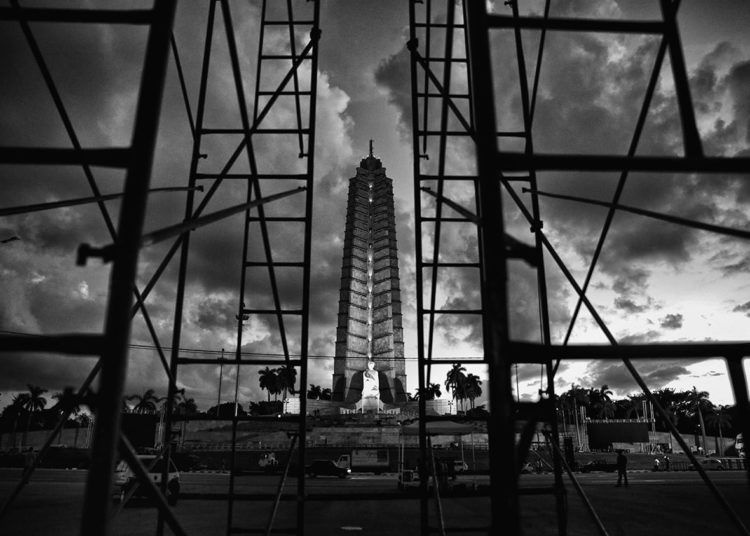
Plaza de la Revolución on the morning of November 28, 2016, three days after the death of Fidel Castro. Photo: Gabriel Guerra Bianchini.
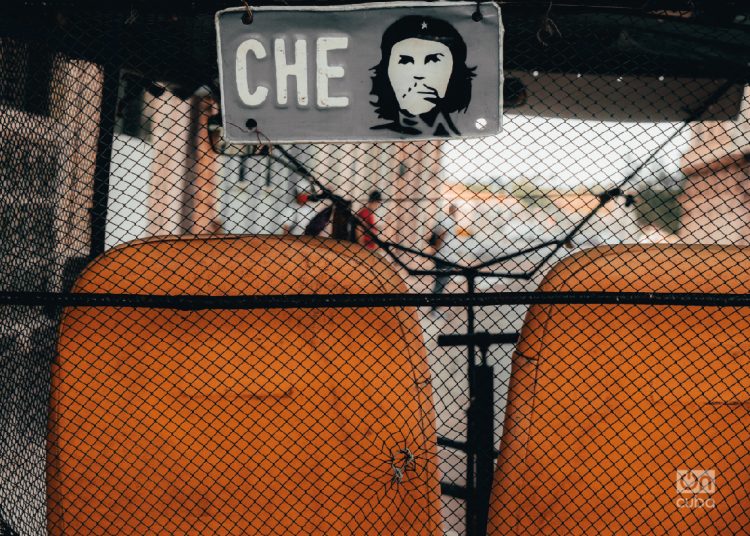
Photo: Randdy Fundora
Then a “rectification of errors and negative tendencies” (1986-91) of this system, interrupted before establishing a new one.
Then, a package of emergency measures (1993-96) to overcome the crisis of the Special Period, almost unchanged for more than ten years of uncertain recovery.
This continued until the beginning of a program of structural reforms called Updating the Model (2011), which produced nothing less than another conceptualization of socialism, economic guidelines and a new Constitution.
In this last, a mixed economy model is advocated, property relations are substantially modified, the private sector and the market are legitimized, and the most radical decentralization of the system is proposed -almost everything still pending implementation.

Plaza de la Revolución. Photo: Kaloian
According to the figures of the VII Congress, the Party had 670,000 members, 13% less than five years before. Added to the 405,830 of the UJC (2012), they were still a very high number with respect to the population and other political parties where it is enough to register, according to those figures in Cuba, out of every 4.5 people of working age 1 is a PCC militant. In its occupational structure, professionals had been the most represented sector (41.6%), above leaders and workers. A quarter of these professionals, equivalent to 11.1% of the total number of militants, were teachers.
Of every 6 members of the PCC, 4 were under 55 years old (2 ½ under 45); 1 between 55 and 60 and 1 over 60. The Central Committee (CC) of the PCC elected at the VI Congress (2011) had an average age of 57, and that of the VII (2016), had decreased to 54. The rejuvenation policy lowered the average age of the top leaders in the provinces to 52 (2018), five less than that of current President Díaz-Canel.
Women were 39% of the Party’s militancy, but 52% of the UJC. In the current CC, they are 42%; and in the Political Bureau (PB), they increased from zero or one, to 4 since 2016. Non-whites in the ranks, as well as in the Political Bureau, represent 35%, the same proportion as in Cuban society, according to the last Census. In the CC, they are 31%, of which the majority are black (16.6%).
The entry of five new members to the Political Bureau at the VII Congress had already lowered the average age from 70 to 63. This PB was the first one where the positions by professional profile (9) -defense, economy, diplomacy, public health, science and technology- exceeded those of career political leaders (8).
Among these political cadres, 5 had led in the provinces, and 3 joined the PB under Raul’s command. Contrary to what is repeated, more military personnel did not enter, but left, and those who remained were already there before Raul’s command. This pattern, which leads provincial leaders of the PCC and the People’s Power to the highest national level, is also part of his legacy.
Probably, this pattern will be maintained in the leadership bodies to be elected by the VIII Congress. The number of women and non-whites, as well as provincial leaders, will increase. Very surely, the age of the Political Bureau will decrease again: the outgoing First Secretary will soon be 90 years old, and the incoming one will have barely turned 61 when taking office. If the number two were a non-white woman or a provincial leader, known for their popular roots, everything would fit.
A friend of mine says that he doesn’t care about the age, color, profession, or even gender of those who lead, as long as they adopt intelligent and effective policies. I don’t know how many people think this way. Still, even if its implications for equality of access and opportunity among diverse groups were to be overlooked, the proximity of profiles between militancy, leadership and society is by no means irrelevant, if only as a point of linkage between the society and its political institutions.
Throughout my life, I have known many Party militants, and not a few leaders, from the local level to the CC and the Political Bureau, including the historical generation. Although I can identify common traits among many of them, their diversity is more revealing to me. Let us say that it would not be difficult to find two Party militants with ideas more different from each other about socialism, its problems and how to solve them, than any Democrat and any Republican with respect to the system of the North.
One of these militants could affirm, for example, that such differences weaken the unity necessary in a Party “of steel,” which assures sovereignty and independence, confronts the internal and external enemy, by force if necessary, and serves as an example to the younger generations. The other would say that, for a democratic socialism, public debate of these differences strengthens a Party that should be flexible, adapt to the historical moment, and apply political solutions to political problems, instead of the simple use of force.
My two militants, who could be 35 or 70 years old, would agree on many other things: the Party could promote a better citizen democracy; sovereignty, social justice, equity and human dignity are non-negotiable. Our system, with its flaws, surpasses any capitalism. However, the two might disagree even more if I asked them what to do in economic policy, how to discuss and legislate in the National Assembly, what are the limits of expression in art, or what they think of the Party-oriented media. Probably, both could cite the historic leadership to support their arguments.
If socialist policy generates judgments like those of my two militants, shouldn’t they be expressed in the Party press? If that policy claims to channel the dissent of society within the framework of established institutions, and if these, in order to remain unique, should be “the most democratic in the world,” should not a legitimate space be provided for a loyal opposition, within the socialist ranks, even if it disagrees with certain policies?
In an increasingly diverse society, thinking creatively about the continuity of this unity would contribute to place – to paraphrase Cintio Vitier – “the devices at the center of the flower.”
***
Note:
1 Speech by the Commander in Chief, Fidel Castro Ruz, Meeting of information to cadres and militants of the Party, Karl Marx Theater.” February 8, 1979, Versiones Taquigráficas del Consejo de Estado, quoted in Cuba y su emigración, 1978: Memorias del primer diálogo, Elier Ramírez Cañedo. Ocean Sur, 2019.
Talking about the Party (II)

Talking About the Party (II)
Dialogue between different generations will just be a good wish as long as the Party and the rest of the institutions it guides do not achieve an environment conducive to respect and trust, to discussion, criticism and ensuring a truly participatory and democratic style in decision making.
By Rafael Hernández
March 31, 2021
Translated and edited by Walter Lippmann for CubaNews

Plaza de la Revolución. Photo: Kaloian
Talking About the Party (I)

Talking About the Party (I)
Reducing the socialist revolution to the protagonism of a party or an ideology does not help to understand its complexities and problems.
By Rafael Hernández
March 17, 2021, in With all its letters
Translated and edited by Walter Lippmann for CubaNews

Photo: Randdy Fundora
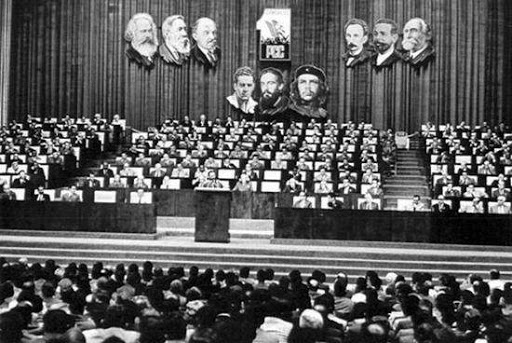
First Congress of the PCC. Held at the Karl Marx Theater in Havana, December 17-22, 1975. Photo: Archive
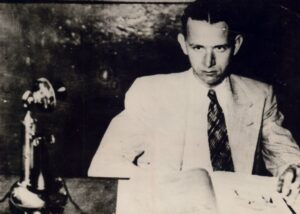
Antonio Guiteras. Photo: Bohemia Magazine
Surprising as it may seem today, those parties, including the Autenticos and the Ortodoxos, opposed to the dictatorship, were left on the sidelines, while people went out to do politics in the streets. Most of those people could not remember when exactly they ceased to exist.
Nothing less than the armed forces, that backbone of the old regime, would be uninstalled, to put it in the jargon in fashion today. No wonder Fidel Castro, who was neither the president nor yet the Prime Minister, was from the beginning the Commander-in-Chief of those newly installed forces, made up of “the uniformed people,” as his head of state liked to say, a smiling Camilo Cienfuegos, who at 27 was not, however, the youngest guerrilla commander.
How the structure of power and the prevailing social order in Cuba in the 1950s could have admitted an “agrarian and anti-imperialist revolution” without it entering from the beginning into the radicality of a real social revolution only makes sense for the codes of that Marxism-Leninism, and in the hypothetical revolutionary scenarios that the Comintern manuals enunciated.
The difference at the outset, when adopting an insurrectional strategy, was concrete political action, which predetermined the type of power at the head of the revolution from the beginning. When it clarified that socialism is reached “by successive preparatory stages,” of which that Program only outlined the first, it was assigning to the “stages” a completely different meaning from those established by the Comintern.
From this perspective, the social conflict was not brought about by interests and factors of power, but by ideology, and cultural representations, such as those of an enemy “that had to be national and foreign at the same time, a monster in which the evil of the empire and the vileness of the traitors could merge.” This parallelism between apparently exclusive visions, brought together in an approach that replaces historical analysis with literary phrases, and the logic of a social revolution by what philosophers call a teleology (of good or evil) confers a curious code of kinship, not at all by accident.
***
To be continued
Cuba condemns Israeli attacks

Cuba condemns Israeli attacks against the Palestinian people
The First Secretary of the Central Committee of the Communist Party of Cuba and President of the Republic, Miguel Díaz-Canel Bermúdez, condemned “the flagrant violations of the human rights of the Palestinian people” and demanded the immediate cessation of Israeli attacks on the Gaza Strip.
Translated and edited by Walter Lippmann for CubaNews.
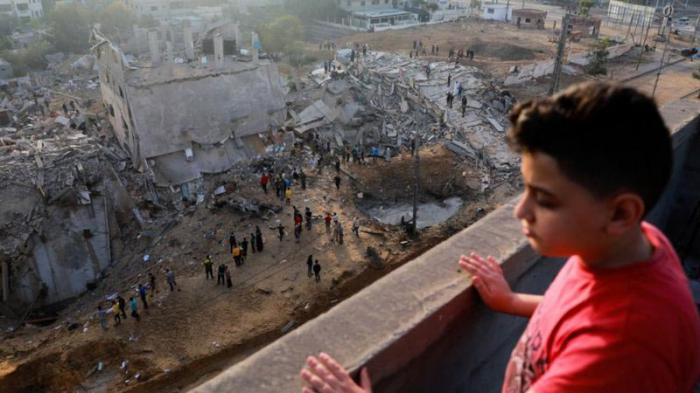
Israel’s indiscriminate shelling of the Palestinian population in Gaza has so far resulted in the deaths of 31 children. Photo: Getty Images
The First Secretary of the Central Committee of the Communist Party of Cuba and President of the Republic, Miguel Díaz-Canel Bermúdez, condemned “the flagrant violations of the human rights of the Palestinian people” and demanded the immediate cessation of Israeli aggression against the Gaza Strip.
“The Zionist barbarism and the mantle of impunity that the U.S. spreads over those crimes with its support to the Israeli regime insult the world,” the Cuban leader said on his Twitter account.
In this regard, the island’s Foreign Minister, Bruno Rodríguez Parrilla, on the same social network, also demanded an end to the Israeli massacre. “The UN Security Council should act and prevent it,” he stressed.
Likewise, the International Relations Commission of the National Assembly of People’s Power (ANPP) of our country issued a statement in which it strongly condemns Israel’s indiscriminate bombings against the Palestinian population in Gaza, which have caused, so far, the death of at least 122 people, including 31 children, in addition to hundreds of wounded and extensive material damage.
The text demands, once again, the immediate cessation of the acts of violence of the Israeli army against the defenseless Palestinian people and the expansionist and colonizing policies of the State of Israel. It also denounces the continued support of the U.S. government for the crimes committed by Israeli forces.
The ANPP called on the international community to act urgently and decisively to force the State of Israel to put an end to its crimes. The Cuban parliament emphasized the urgent need to reach a comprehensive, just and lasting solution to the Israeli-Palestinian conflict.
The Bolivarian Alliance for the Peoples of Our America-People’s Trade Treaty also regretted and condemned the attacks by the Zionist regime.
The Palestinian catastrophe of 1948

The Palestinian catastrophe of 1948
Every May 15 is commemorated the Day of the Nakba, or catastrophe, in Palestine, the date on which around 800,000 Palestinian civilians were expelled after the occupation of their lands and homes in 1948. Only one day had passed since the proclamation of the State of Israel in the Palestinian territory and it was already showing its expansionist and usurping nature.
Author: Jorge Mazón Rodríguez | internet@granma.cu
May 15, 2021 02:05:11 AM
Translated and edited by Walter Lippmann for CubaNews.
Every May 15 is commemorated the Day of the Nakba, or catastrophe, in Palestine, the date on which around 800,000 Palestinian civilians were expelled after the occupation of their lands and homes in 1948. Only one day had passed since the proclamation of the State of Israel in the Palestinian territory and it was already showing its expansionist and usurping nature.
The partition of Palestine, approved by the UN in November 1947, precipitated the events that had been unfolding for some time. Long before, Theodor Herzl had outlined the foundations of Zionism and the future Jewish state. The British Foreign Secretary, Arthur James Balfour, had expressed to Baron Rothschild his government’s support for the establishment of a “national home for the Jewish people” in the region of Palestine; and the Zionists who had gradually settled in Palestine, supported by the international Jewish oligarchy, had taken advantage of Britain’s “neglect” as the mandated power in the region to organize themselves politically and militarily.
Once the cessation of the British mandate over Palestine was announced, coexistence between the Arab and Jewish communities became very tense and confrontations began in the face of the advance of the Zionist project and the refusal of the Palestinians to cede their territories. At this point, what historians call “programmed ethnic cleansing” was implemented, a deliberate policy aimed at displacing the Palestinian Arabs in order to insert the Jewish immigrants who were beginning to arrive en masse.
Yosef Weitz, director of the Land and Forestry Department of the Jewish National Fund and architect of the acquisition of land for the Jewish community in Palestine, gave ideological foundation to the expulsion policy: “It must be clear to us that there is no place for the two peoples in this country (…). We will not achieve our goal of being an independent people as long as there are Arabs in this small country. The only solution is a Palestine, at least Western Palestine (west of the Jordan River) without Arabs (…). The only way to achieve this is to move the Arabs from here to neighboring countries, to move them all; there must not be a village or a tribe left. Only in this way will the country be able to absorb millions of our own brothers. There is no other solution (…)”.
One of the most notorious acts of Zionist gang violence was the massacre perpetrated in Deir Yassin, where 254 Palestinian Arabs were brutally murdered. A former Israeli military governor of Jerusalem described it as follows: “(…) units of the Etzel and Stern gangs jointly organized, without provocation, a deliberate attack on the Arab village of Deir Yassin on the western edge of Jerusalem. There was no reason to justify the attack. It was a quiet village, which had denied entry to volunteer Arab units from across the border and had not been involved in any attacks on Jewish areas. The dissident groups chose it for strictly political reasons. It was a deliberate act of terrorism (…)”.
According to the final report of the United Nations Economic Survey Mission for the Middle East in 1949, the number of Palestinian refugees resulting from the violence and war following the proclamation of Israel as a state, amounted to 726,000, which constituted half of the indigenous population of that region. Since then, the West Bank alone, including East Jerusalem, Gaza, Syria, Jordan and Lebanon, has counted more than 5.7 million Palestinian refugees, who now face the impact of the pandemic as one of the most vulnerable populations.
After 73 years of constant threats, attacks and the Zionist attempt to deprive the Palestinians of their rights, the principles of the Palestinian cause remain unchanged, as does Cuba’s support for the return of the refugees and the two-state solution, which involves the realization of the right of the Arab people to self-determination and access to a free, independent and sovereign state, with its capital in East Jerusalem, and framed within the borders prior to the Israeli occupation of 1967.
Let this Nakba Day therefore serve to vindicate the right of the Palestinian refugee population to return to their country and their homes, and to demand the cessation of the Zionist regime’s attacks on Gaza, where civilians, distributed at a rate of 4,167 inhabitants per square kilometer, are the ones who suffer the most in each attack.
No Democracy Without Sovereignty
You Can’t Have Democracy Without Sovereignty
By Manuel E. Yepe
April 16, 2021
Translated and edited by Walter Lippmann.
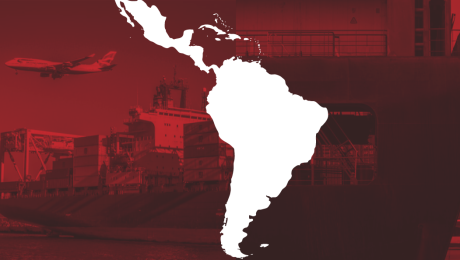
In Latin America, the U.S. control of the media euphemistically identifies as “return to democracy” or “democratic opening”, the return to civilian hands of the governments of those countries that were subjected to bloody military dictatorships promoted by the United States in the last five decades of the last 20th century.
It must be recognized that, technically, this has been a great achievement of imperialist propaganda because the outgoing military dictatorships had been imposed by the United States when the peoples could no longer stand the reigning order and a period of rebellion for independence was on the horizon.
The peoples were not then rebelling against idyllic democracies as one might think now when one speaks of a “return to democracy” but against the humiliating subordination to the dictates of Washington which had put an end to their patriotic dreams of independence.
The triumph of the socialist and pro-independence revolution in Cuba stimulated the hope that the objective of feeling that they were the owners of their sovereignty was viable.
In reality, except in glorious historical moments -which as a rule were cruelly repressed- what existed in these lands before the barracks imposed their order on the oligarchies, were sad caricatures of democracy. They were, in truth, semi-colonial enclaves headed by oligarchs servile to the United States that the empire itself replaced by military tyrannies when it saw its interests in a given country endangered.
On a regional scale, the strategy outlined by the U.S. power elite was based on the consideration that the oligarchies were not in a position to stop the generalized popular struggle that was then approaching. This was due to the worn-out political model designed in the image and likeness of the U.S. and imposed as the only democratic and acceptable one in the hemisphere.
Those traditional parties without any popular base and burdened by corruption and banditry, which were the protagonists of the model, had nothing to do with a true democratic system.
The Latin American majorities wanted the return of civilians to government. The bloody military dictatorships only had the support of the small segment of society that fattened its coffers in the conditions of security and impunity provided by the repression of workers, students and intellectuals.
But the laboring majorities cannot see a “return” to democracy in the return to the situation of lack of opportunities for education, decent work and medical care or the continuity of poverty, marginality, violence, corruption, forced emigration and so many other ills. In any case, the positive aspect has been the opportunity to resume the civic struggles truncated by the military coups.
It is impossible to speak of democracy in countries where the organizations that are part of the Intelligence Community led by the Director of National Intelligence, who reports directly to the President of the United States, operate with impunity in defense of interests alien to those of the country. The CIA, the DEA and other known intelligence, espionage and counter-espionage bodies; where embassies, consulates and other U.S. offices openly pay followers, recruit mercenaries and corrupt officials and politicians.
If Latin America could show a panorama of progress, freedom and justice prior to the takeover of governments by the barracks, it would be possible to speak of a return to democracy. But nothing could be further from the truth.
The true democracy is the one that is yet to come, the one that will mean, for the Latin American nations as a whole, their second and definitive independence.
In fact, this popular democracy has already begun to arrive and the countries of the continent that are marching in the vanguard along this route are those that today face the most powerful media campaigns of discredit, demonization, intrigues and threats.
To those who advance cautiously, they apply the subtle methods of “soft” diplomacy in order to remove them from the leading contingent, although without renouncing the crude method of the military coup when the door remains ajar and the circumstances are propitious, as happened in the shameful case of Honduras.
Latin America has lived under the neoliberal sign of capitalism for almost four decades, has reaped very little economic and social development, and many vices and apocamientos that have stagnated with respect to the rest of the world, making this region the most unequal on the planet.
The “representative democracy” imposed by the empire is false, is not rational, promotes differences, widens the gap between rich and poor, encourages wars, disunity and discrimination based on race, creed, ethnicity and gender.
In Latin America, democracy must be preceded by independence and the unity of internal anti-imperialist forces.
Latin America needs a democracy of solidarity based on equality and friendship among its nations, not on competition and greed.

Manuel E. Yepe
Manuel Yepe Menéndez (Havana 1936), since 1954 was an insurrectional fighter in Havana as a member of the 26th of July Youth Brigades at the University of Havana. He worked in the reproduction and distribution of Fidel Castro’s defense plea “La historia me absolverá” (History will absolve me). In 1958 he edited the clandestine magazine of the M-26-7 ACCIÓN, which was published weekly in Havana and identified itself as the Organ of the Cuban Youth. He has a degree in Law, Economics Management and Social Sciences. He has served as Protocol Director at the Ministry of Foreign Affairs, Cuban Ambassador to Romania. He was General Director of Prensa Latina news agency; Vice President of the Cuban Institute of Radio and Television (ICRT); Director of the Guerrillero de Pinar del Río newspaper, and National Director (founder in Cuba) of the UNDP TIPS project. From 2000 to date he has been a member of the Secretariat of the Cuban Movement for Peace. He was a commentator on international issues for the daily newspapers POR ESTO! (2008-June 2020). August 2020
Malicious Interests Against Cuba in the USA

Malicious interests behind U.S. campaign against Cuba denounced
No study provides scientific evidence that there were radiofrequency waves of high intensity in areas where diplomats were located, stresses Johana Tablada, deputy director-general of the U.S. Directorate of the Cuban Foreign Ministry (MINREX).
Author:

Juventud Rebelde |digital@juventudrebelde.cu
Translated and edited by Walter Lippmann for CubaNews.
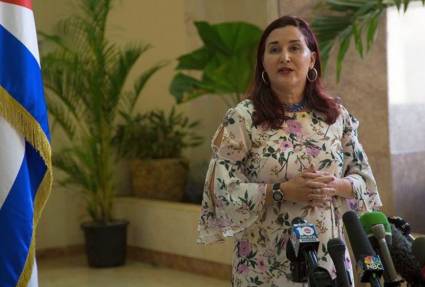
Tablada said that the group of experts from Cuba that investigated this issue explained why the thesis put forward most recently is an unlikely hypothesis Author: MINREX Published: 12/05/2021 | 08:49 am
Malicious interests are behind the campaign on the alleged Havana Syndrome, Johana Tablada, deputy director-general of the U.S. Directorate of the Cuban Foreign Ministry denounced today.
No report or study published in the United States, Cuba or the world provides scientific evidence that there were radiofrequency waves of great intensity in the area where the diplomats who reported health symptoms were located, said the official of the Ministry of Foreign Affairs (MINREX).
The only ones who won with this story are the members of a minority and reactionary group of politicians desperate and willing to resort to any means to try to impose and perpetuate the course of confrontation, lies and injustice in Washington’s policy against the Cuban people and the Americans themselves, she said.
Tablada maintained that the group of experts from Cuba that investigated this issue stated and explained why the thesis exposed most recently is an unlikely hypothesis, and certainly not a proven fact as the media and unidentified sources try to fix in people’s imagination.
She added that the Cuban Academy of Sciences disagreed on this possibility which she described as speculation presented as one more hypothesis, not supported by arguments in the body of the published report of the U.S. Academies of Sciences. The Americans themselves cannot assure what is the cause of the reported symptoms and the absence of information requested to the Washington government is critical, which limited their study.
The diplomat reiterated that the Academy of Sciences and the team of Cuban experts reject the politicization of the issue and recently reiterated the call for collaboration between both countries to solve the matter and establish the truth.
Tablada stressed that up to now the most concrete and factual thing we have seen is that symptoms were reported with such a diversity that even the State Department doctors explained, as well as the Cuban scientists, that so many elements cannot be attributed to a common cause.
The official recalled that the unfounded accusation against her country of the attacks served as a pretext for the withdrawal of most of the staff of the United States Embassy in Havana, in 2017, coupled with an unprecedented sequence of actions of hostility and setbacks in relations between the two countries and peoples.
She said that after the change of administration in the White House we are facing a new cycle of articles and leaks on the alleged existence of attacks, a word not used by official spokespersons of the Washington government in their most recent statements, according to PL. She pointed out that the common denominator of this set of publications is political speculation, manipulation and absence of primary sources and the misleading reference that assumes and presents as a true fact an alleged syndrome that was not proven by science.
The Deputy Director-General of the US Directorate of MINREX pointed out that there is no such thing as the Havana Syndrome outside of propaganda, but we live in a world, she stressed, in which perceptions matter more than realities.
She said that the investigations of the Federal Bureau of Investigation (FBI) and the Ministry of the Interior (Minint) of Cuba were serious and conclusive in ruling out the existence of ultrasonic or infrasonic sonic attacks.
Tablada stressed that Cuba has not questioned the existence of health symptoms, has investigated the issue from the police, medical and scientific spheres and has made many attempts and calls to cooperate by delivering information of its investigations to the U.S. government.
The diplomat concluded that the main victim of this whole saga seems to be again the truth. The measures taken on the basis of unconfirmed speculation have not been reversed and the suffering they have caused to the Cuban people, families and bilateral and people-to-people relations has only been aggravated, she said.
Recently, White House Press Secretary Jen Psaki said that agencies and departments across the federal government are working to address “unexplained health incidents” that are sometimes reported by different agencies and did not occur in one place.
Marco Rubio, of the Senate Foreign Relations Committee, insist on the so-called Havana Syndrome despite Cuba’s denial, supported by scientific studies, which categorically distances itself from such actions.
The CIA and hatred in the social networks

The CIA and hatred as a weapon in social networks
No one who, in the networks, opposes the patterns defended by their paymasters, escapes the fury of the salaried haters. For this purpose, the CIA’s cash register has no limits, nor does the low morality and the dastardly ethics of its mercenaries.
Author: Raúl Antonio Capote | internacionales@granma.cu
May 4, 2021 23:05:02 PM
Translated and edited by Walter Lippmann for CubaNews.
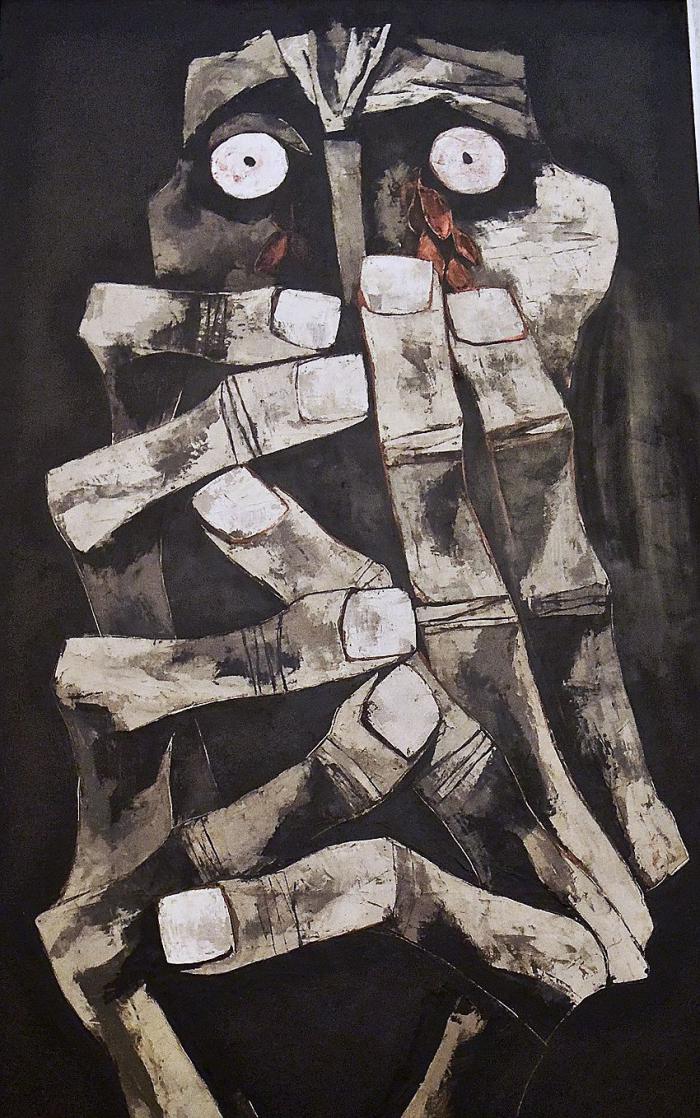 The Political Action Group (GAP), which is part of the Special Activities Center, a division of the U.S. Central Intelligence Agency (CIA), carries out, among other missions, analyses based on Big Data, processes profiles of subjects of interest and draws up action plans that are sent to the Internet Task Force, in charge of executing them.
The Political Action Group (GAP), which is part of the Special Activities Center, a division of the U.S. Central Intelligence Agency (CIA), carries out, among other missions, analyses based on Big Data, processes profiles of subjects of interest and draws up action plans that are sent to the Internet Task Force, in charge of executing them.
Through Big Data, information is obtained that can be used for subversive work, it allows to better organize the forces to mobilize them in the fulfillment of a certain objective and, above all, through the micro-segmentation of the public, they manage, in a particular and specific way, the concerns of each neighborhood, of each family, of each person.
Enemy analysts can build models capable of predicting hidden attributes, including political preferences, sexual orientation, how much you trust the people you relate to, how strong those relationships are, all thanks to the information that users themselves upload to the networks.
In February 2018, following orientations of former President Donald Trump, the so-called Internet Task Force for Cuba or Internet Task Force for Subversion in Cuba was created, subordinated to the gap, which is the same as the CIA.
It is in charge of hiring the so-called netcenters, who execute the campaigns against Cuba, through the recruitment of specialists who, in turn, gather around them dozens of cyber-sicarii. They also have the mission of coordinating the actions of counterrevolutionary platforms and media, and of searching for collaborators on the island, among other tasks.
In cyberspace there is also a sordid specimen, feared by many, the hater. The term, imported from English, refers to those people who are dedicated to harass others through social networks.
They use their victims’ physical characteristics, sexual orientation, race, ideology or religion to carry out their harassment. They use the pain, fears and insecurities of those who take their claims seriously.
Some act out of fun, resentment or envy, but there are others who are true mercenaries, people hired to conduct smear campaigns or character assassinations. That is why they are called cybersicarii.
Character, civic or reputational assassination, as it is also named in the psychological warfare manuals of several intelligence agencies and organizations in the world, is part of the methods used by the US special services to destroy the adversaries of the empire.
The cyber-assassassin seeks to make the person subjected to the aggression feel helpless, think that he is not in control of the situation, wear himself out in useless defenses, become exhausted and try to isolate himself, to get as far away as possible from his harassers. The purpose is to make the victim try to justify herself publicly, and self-censure, which does not necessarily put an end to the attack, and may even intensify it.
They use repeated sending of offensive and insulting messages, highly intimidating, to a given individual, including threats of harm that make the person fear for their own safety; circulate rumors about someone, to break their reputation; manipulate digital materials, photos, recorded conversations, emails, steal passwords to impersonate identity; circulate fake news and cruel “gossip” about their victims; perform economic blackmail… Nothing, no matter how dehumanizing, stops the cia’s hired hands.
When multiple harassers participate in the act of cyberbullying, the action is called mobbing, and is part of the strategy against Cuban Internet users, especially public figures. Hundreds of trolls, digital hitmen, cyber-mercenaries, all trained and paid by the CIA, participate in the attacks, which are perfectly planned and scripted in the U.S. psychological warfare laboratories working for the Task Force.
Revolutionary leaders, journalists, artists, musicians, personalities from different areas of the social, cultural and political life of the country have been subjected to intense attacks of this type.
No one who, in the networks, opposes the bosses who defend their paymasters, escapes the fury of the salaried haters. To this end, the CIA’s cash register has no limits, nor does the low morals and dastardly ethics of its mercenaries.
The CIA and hatred as a weapon

The CIA and hatred as a weapon in the social networks
No one who, in the networks, opposes the patterns defended by their paymasters, escapes the fury of the salaried haters. For this purpose, the CIA’s cash register has no limits, nor does the low morality and the dastardly ethics of its mercenaries.
Author: Raúl Antonio Capote | internacionales@granma.cu
May 4, 2021 23:05:02 PM
Translated and edited by Walter Lippmann for CubaNews.
 The Political Action Group (GAP), which is part of the Special Activities Center, a division of the U.S. Central Intelligence Agency (CIA), carries out, among other missions, analyses based on Big Data, processes profiles of subjects of interest and draws up action plans that are sent to the Internet Task Force, in charge of executing them.
The Political Action Group (GAP), which is part of the Special Activities Center, a division of the U.S. Central Intelligence Agency (CIA), carries out, among other missions, analyses based on Big Data, processes profiles of subjects of interest and draws up action plans that are sent to the Internet Task Force, in charge of executing them.
Through Big Data, information is obtained that can be used for subversive work, it allows them to better organize the forces to mobilize them in the fulfillment of a certain objective. Above all, through the micro-segmentation of the public, they manage, in a particular and specific way, the concerns of each neighborhood, of each family, of each person.
Enemy analysts can build models capable of predicting hidden attributes, including political preferences, sexual orientation, how much you trust the people you relate to, how strong those relationships are, all thanks to the information that users themselves upload to the networks.
In February 2018, following orientations of former President Donald Trump, the so-called Internet Task Force for Cuba or Internet Task Force for Subversion in Cuba was created, subordinated to the gap, which is the same as the CIA.
It is in charge of hiring the so-called netcenters, who execute the campaigns against Cuba, through the recruitment of specialists who, in turn, gather around them dozens of cyber-criminals. They also have the mission of coordinating the actions of counterrevolutionary platforms and media, and of searching for collaborators on the island, among other tasks.
In cyberspace, there is also a sordid specimen, feared by many, the hater. The term, imported from English, refers to those people who are dedicated to harass others through social networks.
They use their victims’ physical characteristics, sexual orientation, race, ideology or religion to carry out their harassment. They use the pain, fear and insecurities of those who take their claims seriously.
Some act out of fun, resentment or envy, but there are others who are true mercenaries, people hired to conduct smear campaigns or character assassinations. That is why they are called cybercriminals.
Character, civic or reputational assassination, as it is also named in the psychological warfare manuals of several intelligence agencies and organizations in the world, is part of the methods used by the US special services to destroy the adversaries of the empire.
The cyber-assassassin seeks to make the person subjected to the aggression feel helpless, think that they are not in control of the situation, wear themselves out in useless defenses, become exhausted and try to isolate themselves, to get as far away as possible from their harassers. The purpose is to make the victim try to justify themselves publicly, and self-censure, which does not necessarily put an end to the attack, and may even intensify it.
They use repeated sending of offensive and insulting messages, highly intimidating, to a given individual, including threats of harm that make the person fear for their own safety; circulate rumors about someone, to break their reputation; manipulate digital materials, photos, recorded conversations, emails, steal passwords to impersonate identity; circulate fake news and cruel “gossip” about their victims; perform economic blackmail… Nothing, no matter how dehumanizing, stops the CIA’s hired hands.
When multiple harassers participate in the act of cyberbullying, the action is called mobbing, and is part of the strategy against Cuban Internet users, especially public figures. Hundreds of trolls, digital hitmen, cyber-mercenaries, all trained and paid by the CIA, participate in the attacks, which are perfectly planned and scripted in the U.S. psychological warfare laboratories working for the Task Force.
Revolutionary leaders, journalists, artists, musicians, personalities from different areas of the social, cultural and political life of the country have been subjected to intense attacks of this type.
No one who, in the networks, opposes the bosses who defend their paymasters, escapes the fury of the salaried haters. To this end, the CIA’s cash register has no limits, nor does the low morals and dastardly ethics of its mercenaries.
Virtudes’ Rolling Kitchen

Virtudes’ Rolling Kitchen
Parque Central Hotel installs modern food truck in the very heart of Old Havana
By Dariel Pradas
April 3, 2021
Translated and edited by Walter Lippmann for CubaNews

Text and photos: DARIEL PRADAS
Many people are already talking about the news -and also the dishes- of a food truck next to the Parque Central Hotel, on Virtudes Street, in the municipality of Old Havana.
Every day, from 10:00 a.m. to 4:00 p.m., a truck with the best retro style of the 1940s parks at that address. Its menu of chicken, pork, hamburgers and other fast-food variants attracts a clientele that, without queue or matazón [slaughter?], comes to taste the culinary standards deduced from the Iberostar chain and its five-star plus “inn”.
The offer also provides a free home delivery service and, although some people find its price onerous in general, others find it economical in comparison with gastronomic businesses in the self-employed sector.
A food truck is basically a vehicle capable of offering any type of menu in streets, squares, fairs and, in essence, open places: a sort of mobile kitchen.
In recent years, this practice has become so popular around the world that filming TV programs in such trucks, complete with chefs, aprons and gourmet terminations, has become commonplace.
It is said that the food truck on Virtudes Street is the first of its kind in Cuba; however, Jose Luis Ayala, deputy general manager of the Parque Central Hotel, says that the Melia Habana inaugurated one before, only that it focused on cocktails, not food. The Comodoro and Cohiba hotels also have similar vehicles.

The food truck menu at the Parque Central hotel consists mainly of fast food offerings.
In the 1980s, Ayala says, trucks with the same purpose of the food truck used to appear at several Havana events, but without the specialization and technologies of their current relatives: with their griddles, fryers, microwaves, scrubbers, their own electric plants, water recycling systems, policies that establish the exclusive use of biodegradable materials…
“It’s not just selling food for the sake of selling, but doing so with an image that identifies the hotel, is attractive and complies with the relevant ecological standards,” argues the assistant manager.
Sales in pesos are also important
The idea of the food truck in Cuba came from the then president of Cubanacán, Yamily Aldama, now deputy minister of Tourism. The goal was, according to Ayala, “to boost domestic sales, and then, to bring the hotel product closer to the towns and places where the summer events took place.”
In 2019, summer fairs began to be organized with the participation of hotel gastronomy. Parque Central repeated these experiences in Virtudes Street, La Piragua and other locations.
“We saw that it was a business opportunity, with a sustainable income, and that the service was recognized by customers, both by residents and local tourists who were passing through the city,” says the deputy director, who discussed a thesis in 1991 on the influence of Cuban food on tourism.
To perform this service in outdoor areas, most of the time tents were rented. A food truck would be, for its ease of movement and aesthetic appeal, a much more viable option. Once the investment was approved by the joint venture Amanecer Holding S.A., the owner of Parque Central (Iberostar is the administrator), the truck was imported and arrived in Cuba at the height of covid-19, at the end of 2020.
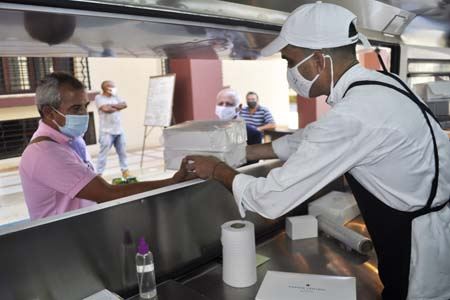
The food truck service complies with established sanitary protocols to counteract the spread of the coronavirus.
“The level of tourism has dropped a lot. It was very good for us to have this type of service, because right now, in the stage we are in of the pandemic, we can’t have that influx of foreign tourists,” Ayala admits. “So, we link the offer with the local market segment. As for prices, we can’t say they are cheap, nor very high. We did a study and looked for a balance between the quality of the offer and the price: something that the customer would accept.”
Although the food truck is by far not the hotel’s main business, “it helps to cover the salary expenses we have to pay to keep the hotel open. In addition, we link a large part of the hotel’s workers to the truck”.
Yoinys Pérez, sous chef at Parque Central, thinks that the food truck concept is a very good idea: “We are happy, above all, because we have work. With this we were able to incorporate workers who were at home, at 60 percent (earning that proportion of their usual salary)”.
With his 13 years of experience at the hotel, this specialist found it a little hard to adapt to the small dimensions of the truck, with the heat of the fryer close and constant.
“Sometimes I miss my old kitchen. It’s not the same to prepare a dish to order, where we have a restaurant that is five forks, with all kinds of dishes, products, finishes, sauces… they are dishes that take another kind of treatment,” he sighs suddenly.
“You miss… you miss that adrenaline. On the go, it comes out! Everything by time: starter, main course, dessert. It’s another kind of service, in which the client enjoys the hotel more and the chef innovates and feels more fulfilled.”
Nevertheless, Yoinys has come to appreciate his work in the food truck. For example, he enjoys pleasing local customers, who have a different palate than the foreign tourists he usually serves: “It’s different, but even much better. First, because they speak our language. Second, they have the same tastes as us. It’s what I know how to eat. What my children eat.
Restaurant on wheels
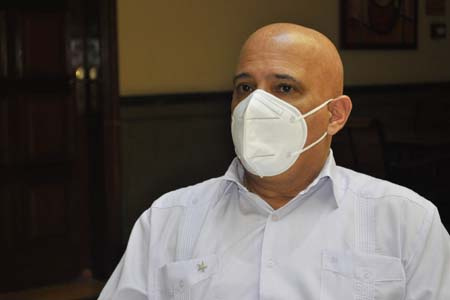
“I am a lover of gastronomy and an advocate of typical Cuban dishes,” says José Luis Ayala, assistant general manager of the Parque Central Hotel.
The food truck is here to stay. In the words of general manager Jorge Sáez Parra, “it allows you to adapt to the new reality one hundred percent. It is a service in which you are in the open air. People pass by, take it and eat it wherever they want. It is the same as Iberostar’s Covid protocols. It guarantees gastronomy in a safe way”.
Moreover, after the current pandemic crisis, such a truck will have even more repercussions, perhaps in the context of thawing, starting with fairs and concerts all over Havana.
“The essence of the food truck is to bring the offer closer to the points where there is demand for an agile service and food that does not need to be very specific, but attractive”, says the Spanish director, “It gives you flexibility: like a restaurant on wheels so that you go to where the customers are, not that the customers come to you. That’s its appeal.
Subscribe to Blog via Email
| M | T | W | T | F | S | S |
|---|---|---|---|---|---|---|
| 1 | 2 | 3 | ||||
| 4 | 5 | 6 | 7 | 8 | 9 | 10 |
| 11 | 12 | 13 | 14 | 15 | 16 | 17 |
| 18 | 19 | 20 | 21 | 22 | 23 | 24 |
| 25 | 26 | 27 | 28 | 29 | 30 | 31 |
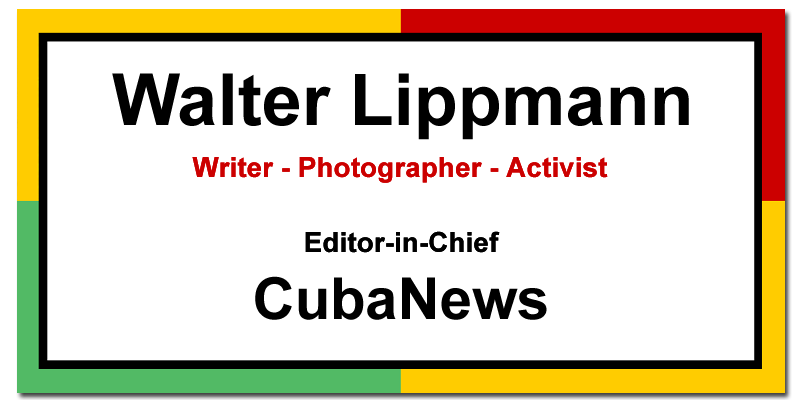
You must be logged in to post a comment.